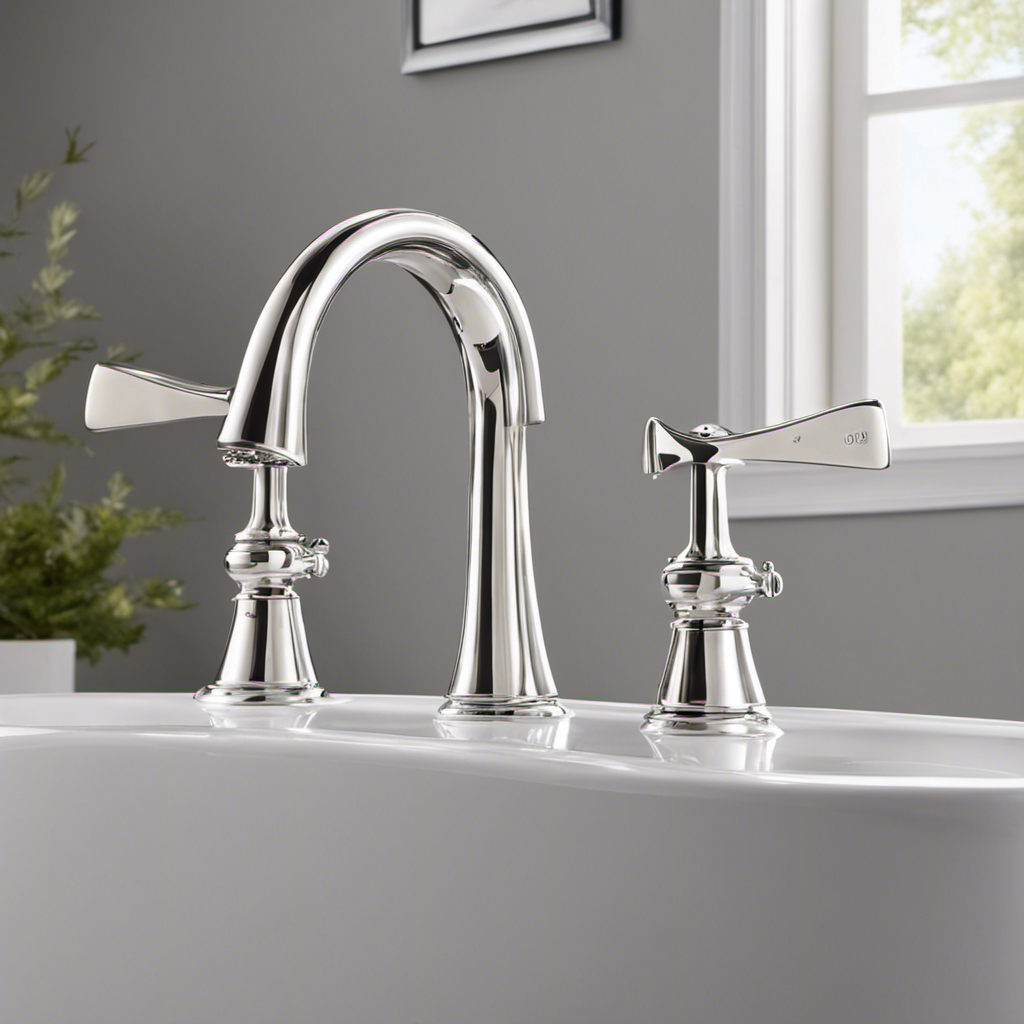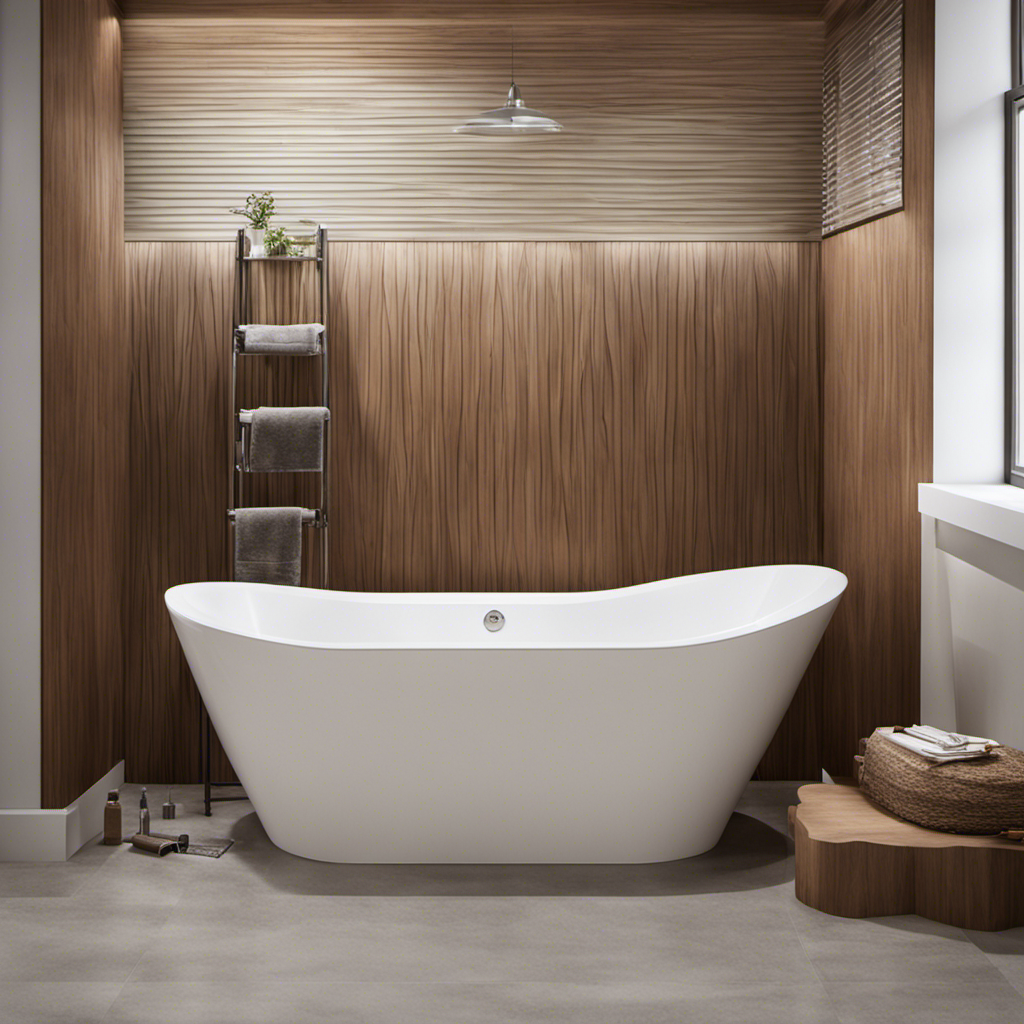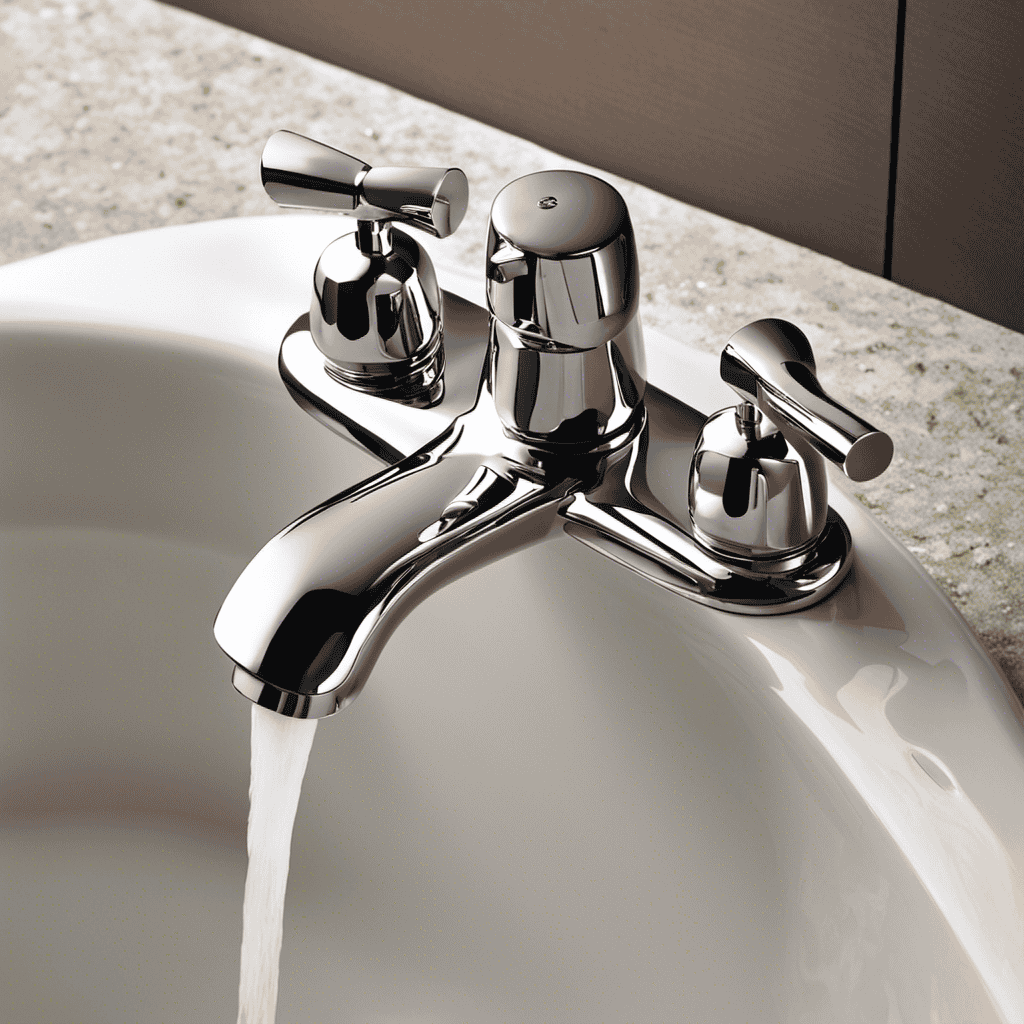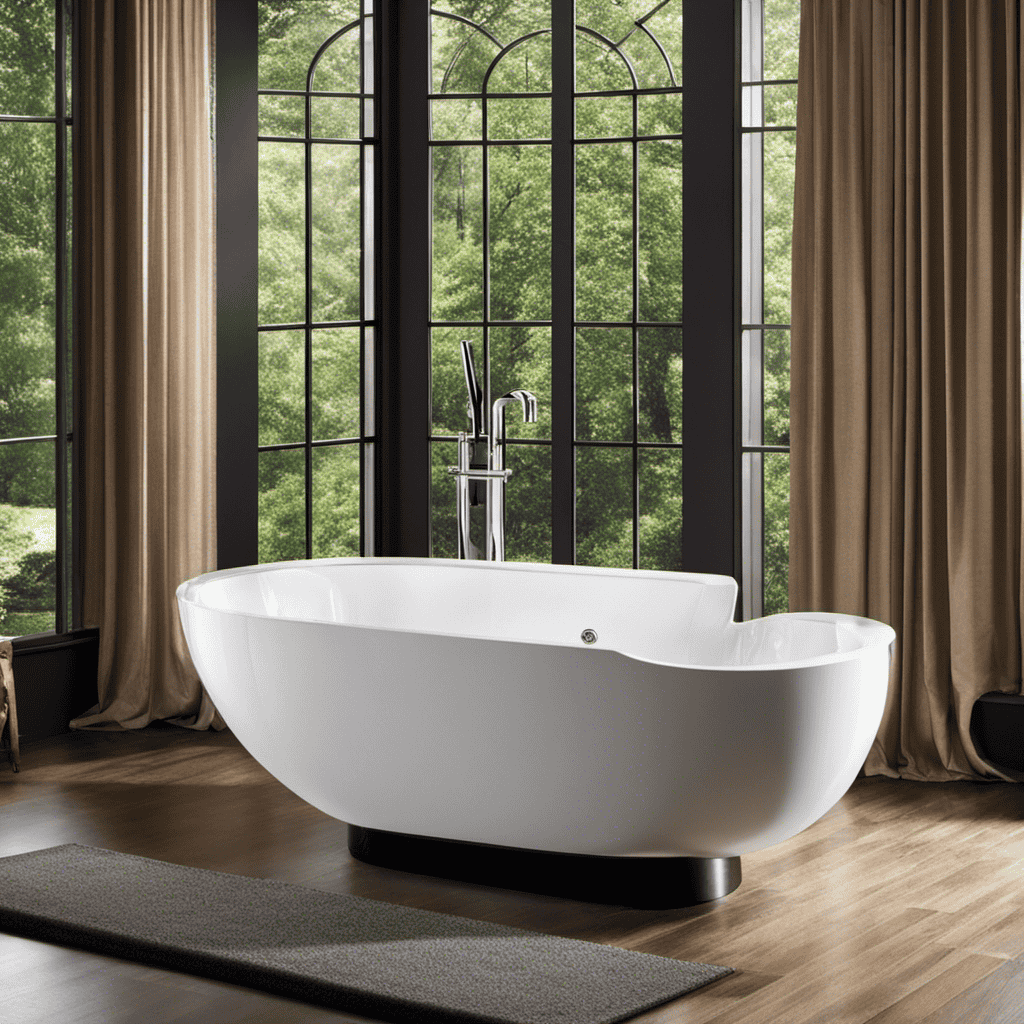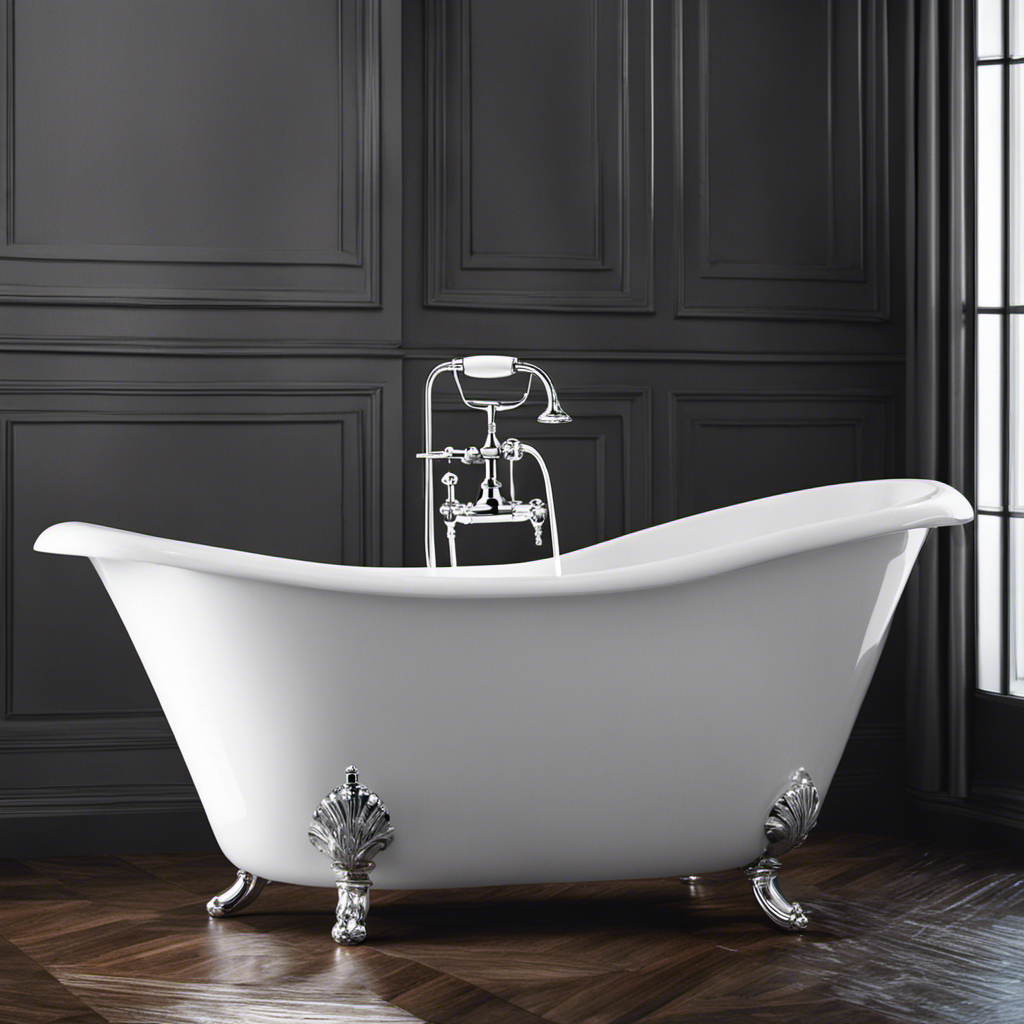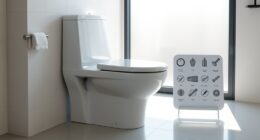Installing a new bathtub faucet may seem like an impossible task, but fear not! I’m here to guide you through every step of the way.
With just a few tools and materials, you’ll be able to transform your bathroom into a haven of relaxation.
In this article, I’ll show you how to shut off the water supply, remove the old faucet, and install the new one.
So, let’s dive in and make your bathroom dreams come true!
Key Takeaways
- Choose the right faucet based on preferences and bathroom design.
- Shut off the water supply by locating the main water shut-off valve and turning it clockwise.
- Remove the old faucet by removing screws or bolts and lifting it off the bathtub.
- Install the new faucet by positioning it correctly, securing it with nuts, and checking for leaks.
Tools and Materials Needed
You’ll need a few tools and materials to install the new bathtub faucet.
First, you need to choose the right faucet that suits your preferences and the design of your bathroom. Consider factors like the type of faucet, the finish, and any additional features you may want.
Once you have selected the faucet, gather the necessary tools such as an adjustable wrench, pliers, Teflon tape, and a screwdriver.
As for the materials, you will need a new faucet, supply lines, and a drain assembly if it is not included with the faucet.
Proper maintenance of the new faucet is also crucial to ensure its longevity. Regularly clean the faucet with mild soap and water to prevent buildup and avoid harsh chemicals that could damage the finish.
Additionally, check for any leaks or drips and promptly address them to prevent further damage.
Shutting Off the Water Supply
To begin, make sure you’ve shut off the water supply before proceeding. This is a crucial step to avoid any water leakage or damage during the installation process. Here are the steps to properly turn off the water supply:
-
Locate the main water shut-off valve: This valve is usually found near the water meter or where the main water supply enters your home. It is typically a lever or a wheel.
-
Turn off the valve: Use a wrench or your hand to turn the valve clockwise until it is fully closed. This will stop the water flow to the entire house.
-
Drain the remaining water: To prevent any residual water from causing a mess, open a faucet at a lower level in your home to drain the remaining water.
-
Verify the water supply is off: Check faucets and fixtures throughout your house to ensure that no water is coming out. This will confirm that the water supply has been successfully shut off.
Removing the Old Faucet
First, check if there are any visible screws or bolts securing the old faucet in place. Use a screwdriver or wrench to remove them. Once the fasteners are removed, carefully lift the old faucet off the bathtub. Be prepared for some water to drip out as you disconnect the water supply lines. Before replacing the plumbing, it is important to choose the right faucet for your bathtub. Consider the style, finish, and features that best suit your needs. To help you make an informed decision, here is a table comparing different types of bathtub faucets:
| Faucet Type | Description |
|---|---|
| Wall-Mounted | Attaches to the wall |
| Deck-Mounted | Installs on the rim of the bathtub |
| Freestanding | Stands on its own |
| Roman Tub | Designed for larger tubs |
Carefully weigh the pros and cons of each option to ensure you choose the right faucet for your bathroom.
Installing the New Faucet
Once you’ve removed the old faucet, make sure to clean the area thoroughly before proceeding.
Now, let’s move on to installing the new faucet for your bathtub. Here are the steps you need to follow:
-
Choose the right type of faucet for your bathtub: Consider factors such as the style, finish, and functionality that best suits your needs and preferences. Don’t forget to measure the existing holes to ensure a proper fit.
-
Gather the necessary tools: You will need a wrench, adjustable pliers, Teflon tape, and a screwdriver.
-
Position the new faucet: Place the new faucet over the holes and align it properly. Ensure that the spout faces the center of the tub and the handles are in the correct orientation.
-
Secure the faucet: Use the adjustable pliers and wrench to tighten the nuts underneath the faucet. Make sure everything is secure and leak-free.
Testing and Finishing Touches
After securing the faucet, I turn on the water to test for any leaks or issues.
Testing procedures are crucial to ensure that the installation is successful and there are no hidden problems.
I observe the faucet closely, checking for any signs of water leakage.
I also inspect the connections, making sure they are tight and secure.
If there are any leaks, I follow troubleshooting tips to identify and fix the problem. This may involve tightening loose connections or replacing faulty parts.
Additionally, I test the functionality of the faucet by turning it on and off, adjusting the water temperature, and testing the water pressure.
Once I am satisfied with the results and there are no leaks or issues, I consider the installation complete.
Frequently Asked Questions
How Do I Choose the Right Type of Bathtub Faucet for My Bathroom?
When choosing the right style of bathtub faucet for my bathroom, I consider factors such as the design, finish, and functionality. It’s important to select a faucet that complements the overall aesthetic and meets my specific needs.
Can I Install a New Bathtub Faucet Without Professional Help?
Yes, I can install a new bathtub faucet without professional help. However, it is important to follow the proper steps and ensure that I have the necessary tools and knowledge for a successful installation.
What Should I Do if I Encounter Any Leaks After Installing the New Faucet?
If I encounter any leaks after installing the new faucet, I would troubleshoot the issue by checking for loose connections or damaged seals. Then, I would fix the faucet leaks by tightening connections or replacing faulty parts.
Are There Any Specific Maintenance Tips to Keep My New Bathtub Faucet in Good Condition?
To keep my new bathtub faucet in good condition, I follow a strict maintenance routine. I regularly clean it using specific cleaning techniques and ensure that all parts are properly lubricated. This ensures its longevity and efficient functionality.
Can I Install a New Faucet on an Old Bathtub or Do I Need to Replace the Entire Bathtub Unit?
I can install a new faucet on an old bathtub without having to replace the entire unit. By following the proper steps and using the right tools, I can easily replace the faucet and improve the functionality of my bathtub.
Conclusion
As I tightened the final bolt on my new bathtub faucet, I couldn’t help but feel a sense of accomplishment.
The journey to this moment had been a challenging one, but I persevered. Just like a ship navigating through rough waters, I faced obstacles and made adjustments along the way.
But now, as the water flowed smoothly from my new faucet, I knew that all my efforts had paid off. It was a reminder that with determination and the right tools, we can overcome any challenge that comes our way.
